RNAS Culdrose
A SHORT HISTORY OF ROYAL NAVAL AIR STATION CULDROSE
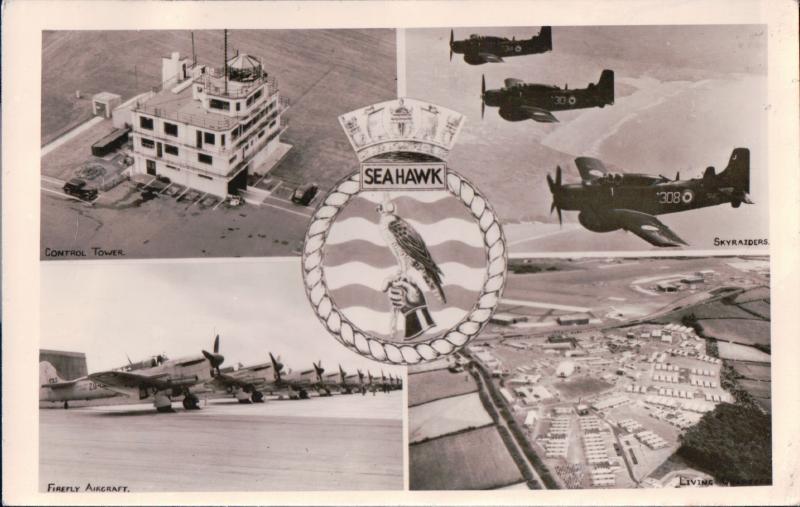
Royal Naval Air Station Culdrose, is the biggest helicopter base in Great Britain and is situated adjacent to Helston along the main A3083 road to The Lizard.
Most present day military airfields have been rebuilt since WWII. However, Culdrose can rightfully claim to be the only one that has been constructed from new since that time on land that was not previously used for flying.
Culdrose started its life when the Admiralty surveyed the area in 1943 and finally purchased the 750 acres of prime agricultural land formerly known as `The Downs` in February 1944.
It was originally given the name HMS Chough (RNAS Helston) after the Cornish bird. However, after deliberation by the Lords of the Admiralty it became HMS Seahawk (RNAS CULDROSE) when commissioned on 17th April 1947, under the command of Captain G C Dickins, RN.
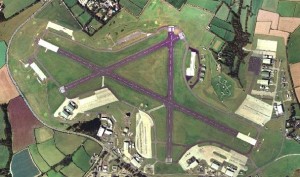
With a life expectancy of about ten years, the Air Station, originally designed as a wartime airfield, had three runways, could accommodate nine squadrons and had a complement of about 1500 personnel. Much of the infrastructure was a `hutted camp` with extensive hangarage consisting of six `Mainhill` and seventeen `Pentad` hangars. Almost all of the original accommodation has now been replaced by modern buildings.
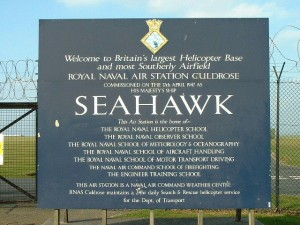
When Culdrose opened in 1947 its primary role was the housing of the Naval Night Fighter School along with its first Squadron 780NAS. It`s secondary task, identical to today, was to provide a home for disembarked front-line squadrons. Initially, the skies around Helston were filled with the sound of piston-engined aircraft such as the Firefly, Anson and Sea Fury.
The day of the piston-engined fighter was fast drawing to a close and the Naval Jet Evaluation and Training Unit (702NAS) was formed to bring into service the age of the jet fighter.
The early 1950`s also saw another major change in the Fleet Air Arm`s thinking with the introduction of the Skyraider AD-4W in the Airborne Early Warning (AEW) role. These aircraft provided an `over the horizon` looking capability for the fleet at sea and remained in service with 849NAS until its replacement by the Gannet AEW 3 on February 1st 1960.
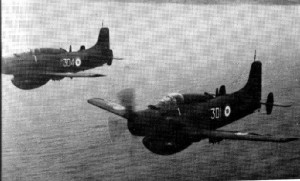
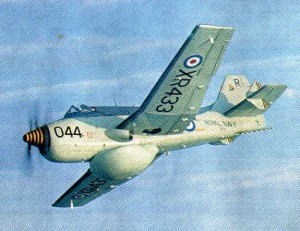
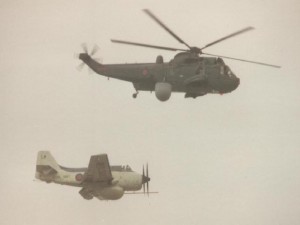
Photo BOB TURNER
The 1960`s saw Naval jet aircraft coming of age with such aircraft as the the Sea Vixen, Sea Venom and Sea Hawk operating from the base.
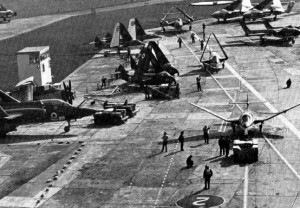
However, perhaps more importantly, this period saw the first major expansion in the operation of Naval helicopters. Culdrose had been chosen as the main helicopter training base for the Royal Navy and Hillers, Whirlwinds and Dragonflies of 705 NAS arrived in 1958.
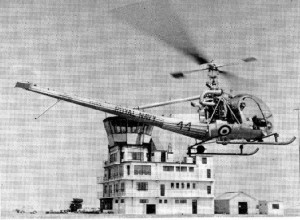
These machines were the workhorse of Basic Helicopter Flying Training at 705 Sqn during the 1960`/70`s.
In 1960 the Intensive Flying Trials Unit (700H) arrived to evaluate the Wessex 1 for its introduction as a Carrier based Anti-Submarine Helicopter.
1962 saw the formation of 706NAS as the first of the new front-line Wessex squadrons.
700W formed in June 1962 to evaluate the Wasp and 700V in December 1963 with the twin-engined Commando Wessex HU5. Both were recommissioned as front-line Naval Air Squadrons (NAS) during the Spring of 1964.
The Wasp joined 706 NAS and the Wessex HU5 went to 707 Naval Air Commando Squadron (NACS).
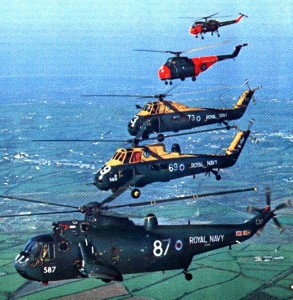
There was little change then until the mid-1960`s. At this time the normal 65 helicopters operating from the base on a day to day basis would be bolstered to 110 when the front-line squadrons disembarked.
It is from this point that Culdrose can claim to be the largest helicopter base in Europe.
The Wessex Mk3 entered service in 1967 followed by the Seaking Mk1 in 1969.
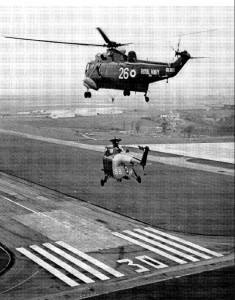
In 1970 a £3.5 million rebuilding programme commenced for the airfield, culminating in the opening of the Duke of Cornwall building in May 1972. This was shortly followed by a £4.5 million redevelopment of the accommodation site.
During this 1972 the Royal Naval Observer School and 750NAS (Observer Training Squadron), complete with Sea Prince aircraft, returned to Culdrose.
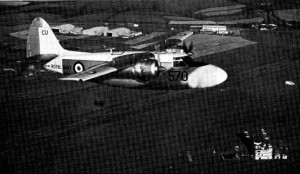
Although 706 NAS had regularly provided helicopters for Search & Rescue (SAR) operations, 1974 saw the arrival of 771 NAS dedicated to the this role with 365 day coverage.
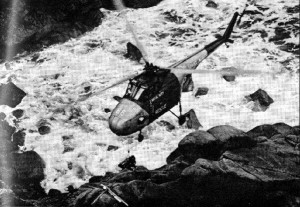
With the introduction of the Seaking and its popularity with overseas nations, Culdrose saw an influx of foreign aircrew for training. Up until 1976 the Royal Navy had successfully trained aircrew from Norway, India, West Germany, Pakistan, Egypt, Belgium and Australia.
February 1978 saw the arrival at the base of the bright yellow Seaking HAR3 and the Royal Air Force Seaking Training Unit (RAFSTU).
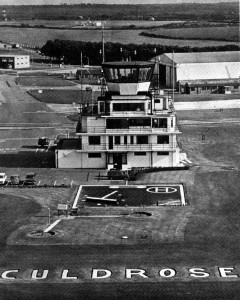
This was replaced by a larger tower in the early 1990`s.
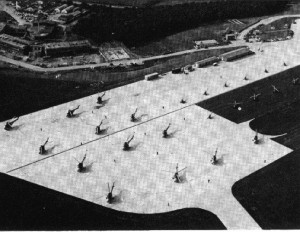
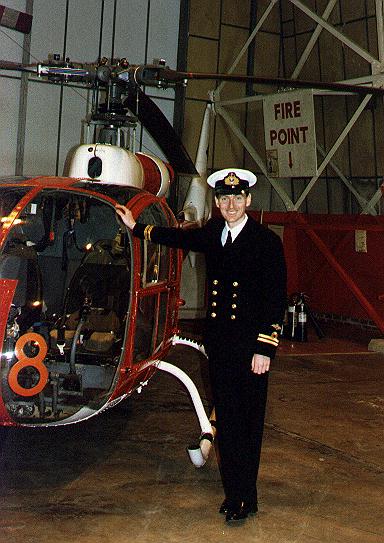
This is ME!
Graham G Matthews
as a young naval pilot with a Gazelle helicopter of 705 Sqn, RNAS Culdrose, April 1988.
CULDROSE IN THE 21st CENTURY
Although over the years the emphasis has changed from fixed wing fighter aircraft to rotary wing, today, the role of the Air Station remains largely the same.
Culdrose remains Britain`s largest military helicopter operating base and is home to many Fleet Air Arm Units operating a variety of aircraft types.
Basic Helicopter Flying Training in the form of 705 Naval Air Squadron moved to the Defence Helicopter Flying School at RAF Shawbury, Shropshire in 1997. The Gazelle was finally replaced by the Eurocopter AS350BB Squirrel.
At present there are two main types of helicopter at Culdrose, the Seaking and Merlin.
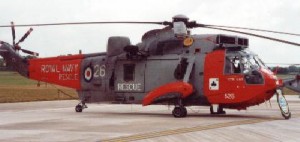
Photo BOB TURNER
Several versions of the Seaking are still in service. 771 Naval Air Squadron operates the HAR5 version in the Search & Rescue (SAR) role. These red and grey coloured helicopters are on call 24 hours a day 365 days a year providing coverage over a 250 mile radius from Culdrose. They perform hundreds of missions each year and save countless lives.
The remaining Sea Kings at Culdrose are mostly the ASaC7 models of 849 NAS, with a HQ Flt that remains shore-based and 2 Flights (A and B), which embark the carriers as the “eyes-in-the-sky”.
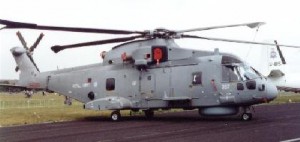
Photo BOB TURNER
824 Naval Air Squadron commissioned on 2nd June 2000 as the training squadron for aircrew and engineers who will fly and maintain the Merlin in the operational units.
814 Naval Air Squadron, “The Flying Tigers”, were the first front-line Merlin squadron to re-equip with the Merlin during 2001.
820 Naval Air Squadron was due to re-equip to the Merlin in 2003 and 829 NAS in 2004.
Fixed wing assets at Culdrose included the Jetstream T2s of 750 NAS which is responsible for training observers for the front line units, training which includes navigation, radio and radar techniques and tactical skills.
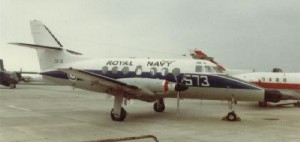
Photo BOB TURNER
In 2011, the Jetstream’s were replaced by Beechcraft Super King Air 350ER (Avenger) aircraft.

The Fleet Requirements Air Direction Unit (FRADU) Hawks provide the high-speed tasks for the Royal Navy. These aircraft are still owned by the RAF and are only leased by the Navy, being operated by Hunting Aviation and flown and maintained by civilians.
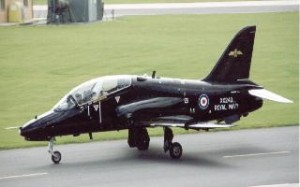
Photo BOB TURNER